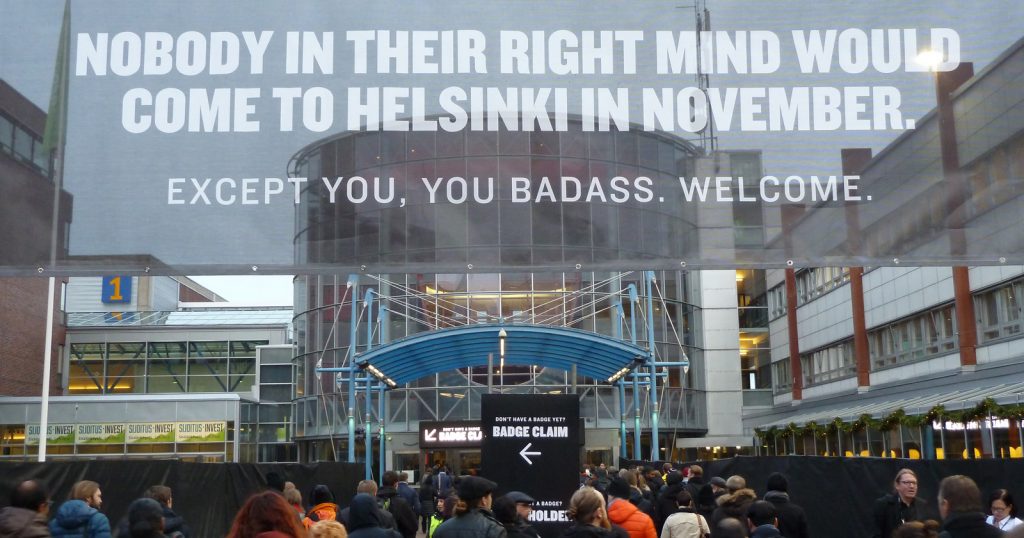Who in their right mind would come to Helsinki in November?—Indeed, thousands of people from the startup and tech communities did. They did so because of Slush, one of the largest startup conferences worldwide and the most important one in Europe.
On November 30 and December 1, Slush 2016 (short: Slush 16) attracted more than 15,000 participants: Entrepreneurs, investors, technology specialists, and renowned thought leaders created a thrilling and highly inspiring environment. Talks, discussions, and a huge exhibition space provided a wide-open window that showed where the startup and technology world is today, and where it is progressing.

pd7.group’s Barbara Hoisl and Andreas Birk joined Slush to monitor major trends in strategy and business models, product management, and development. This article reports our most important impressions. So read on for key Slush 16 takeaways.
This first part of our report presents two outstanding keynote addresses by Steve Jurvetson and Albert Wenger. These leading venture capitalists lay out thought-provoking perspectives on how upcoming technology will impact our lives and our businesses.
Part 2 of this report takes a look on the Nordic startup scene and discusses the state of industrial IoT (Internet of Things).
Steve Jurvetson: Forging the future with software
Venture capitalist Steve Jurvetson is known for his profound and successful investments in the technology sector. Examples are Nervana, Rethink Robotics, Planet, SpaceX, and Tesla Motors.
At Slush 16, Jurvetson gave a keynote talk under the headline “The Big Think: Forging the Future”. Building on trends and patterns that he sees in the entrepreneurs he invests in, he argued very convincingly that entrepreneurship and technology were increasingly defining the economy, and that they were the source of most future economic growth.
The baseline of his argumentation was Moore’s Law and the accelerated decrease of computation cost. Moore’s Law observes and projects that the number of transistors in a dense integrated circuit doubles approximately every two years.
Enabled by this progress and over the past 120 years since we use automated computation, the cost of computational power has decreased at an accelerated rate. We must expect that this will continue for the foreseeable future of the next 10 years.
Jurvetson pointed out that cheaper and cheaper computational power were a major driving force of the many computing- and software-enabled technological revolutions we witness today.
As a consequence, he claims, many established industries would be disrupted by new technology brought forth by entrepreneurs: “I believe all meaningful change […] comes from new entrance. It never comes from an existing company in their existing business.” And even more: “Every industrial sector, and information sector, and financial services sector, that may not have felt like a tech sector, is becoming a tech sector.”
To illustrate and back up his projections, Jurvetson showed several examples of current new technological developments from startups and new companies like SpaceX, Planet, Rethink Robotics, and Zoox. As major source of progress besides increasing computational power, he identified deep learning / machine learning in combination with big data.
As a venture capitalist, Steve Jurvetson might be biased towards overrating the role of startups. The reality might not be just black and white. However, he provides the evidence that small entities can cope extraordinarily well with new technology. In disruptive innovation, speed and agility are extremely important capabilities of successful enterprises.
Jurvetson’s argumentation lays out blueprints for successful entrepreneurship in the technology sectors. For established corporations, it represents a bold warning and suggests cornerstones of viable innovation initiatives.
Albert Wenger: Software-based knowledge society disrupts industrial economy
Industrial society has been built on and around capital as the scarce resource. You needed capital to buy goods and to build up production. Sold products brought you revenues and increased your capital.
Software and the past advances in computer technology have changed this fundamentally. Software enables zero marginal cost so that today we can consume many software-based products and services for free. At the same time software technology gives us access to an infinite space of new products and solutions that come with no or negligible physical limitations.
Albert Wenger illustrated this in his Slush 16 talk in a very crisp and convincible way. He concluded that we now live in the early phase of a new era: The knowledge society, in which access to knowledge, or “attention” as he terms it more fundamentally, has become the new key enabler of progress and thus the new scarce resource or binding constraint.
The knowledge society is currently disrupting the established systems of industrial society. And the transition is progressing at a speed unexpected and tremendously underestimated by most traditional players.
Wenger sets out to analyze the forces of the transition towards the knowledge society (see his public book project “World after Capital”). He calls on us to participate in developing the rules of the new economic and social settings.
Why is this relevant to industry? why to business strategy and software product management?—First, we must be aware that conventional wisdom and accepted habits from the industrial age are no longer valid. Second, we must rapidly focus our attention on software and understand its emerging new rules and their implications. Third, the ongoing disruption affects economy and society alike. We must consider and drive societal change along with new economic models and business strategies.
Continue reading part 2 of this report to learn what is so special with the Nordic startup scene, and what is the state of entrepreneurship in the industrial Internet of Things?